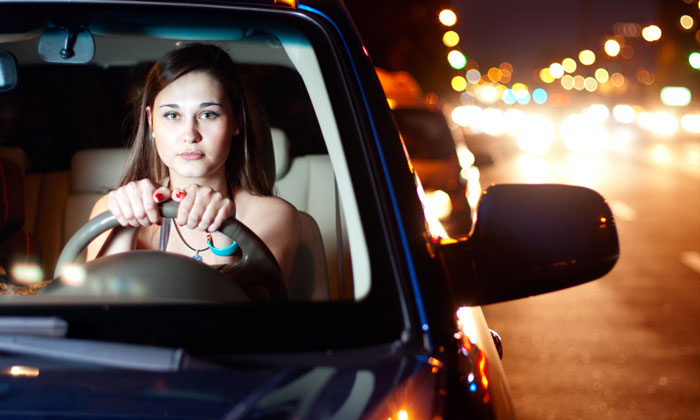Driving at night is more dangerous, even though there is often less traffic than during daylight hours. In fact, nighttime crashes are three times more fatal than those that occur during the day, according to the National Highway Traffic Safety Administration (NHTSA).
There are a few reasons for these sad statistics:
- We don’t see as well in the dark, which means that we often have less room and time to stop.
- The glare from streetlights can sometimes make it harder to see.
- There are more drunk drivers on the road at night.
- Drivers are more apt to be drowsy while driving.
But sometimes we have no choice but to drive at night. So if you are heading out, you may want to consider these tips to reduce your chances of being in an accident.
Don’t drive while drowsy – You should not drive when you are sleepy. If you are on your way home from out of town or working a late shift and you are feeling drowsy, it’s best to pull over and get some caffeine in your system and rest a while.
People have a number of techniques to wake themselves up, including turning the radio on and singing, rolling down the windows for fresh air or stopping and taking a short walk to get the blood flowing again.
But if you are really tired, you should probably find a place to stay for the night. It’s not worth becoming a statistic for want of a good sleep.
Drive defensively – One of the big dangers at night is other drowsy drivers or motorists driving under the influence. People in these states are more likely to not stop at red lights, speed and drive erratically. It’s on you to watch out for them. Put your defenses up and be on high alert for bad drivers.
Avoid two-lane highways – Head-on collisions happen most frequently on two-lane highways or roads. There are no barriers, no median and when you pass oncoming traffic you are both going fast and not too far apart from each other. Try to give the opposing lane a wide berth by driving more to the right edge of your lane.
These roads are also dangerous because of the likelihood of being blinded briefly by oncoming vehicles’ headlights. Two-lane highways often have many turns, which makes them even more dangerous. If you can, use a safer route at night.
Reduce your speed – Speeding is involved in 37% of vehicle crash fatalities at night, compared to 21% during the day, according to the NTHSA. Adjust your speed at night, so you have more time to react to dangers.
Use high-beams in right conditions – You should use your high-beams at night whenever possible if there is no oncoming traffic. This is especially the case in rural areas. Just remember to turn them to low-beams when you are within 500 feet of an oncoming car or driving behind another vehicle.
Turn down interior lighting – If your dashboard lights are too bright, it can reduce your ability to see the road ahead, especially if you look down towards your speedometer and then back to the dark road ahead, requiring your eyes to adjust to the darkness again. Dim your interior lights for nighttime driving enough that you can still see the important gauges.
Look away from car lights – To avoid being blinded by the lights of an oncoming vehicle, you should shift your eyes down and to the right and use the right edge of the road or lane markings to keep you on track. Once the car has passed, look at the full road ahead again.





